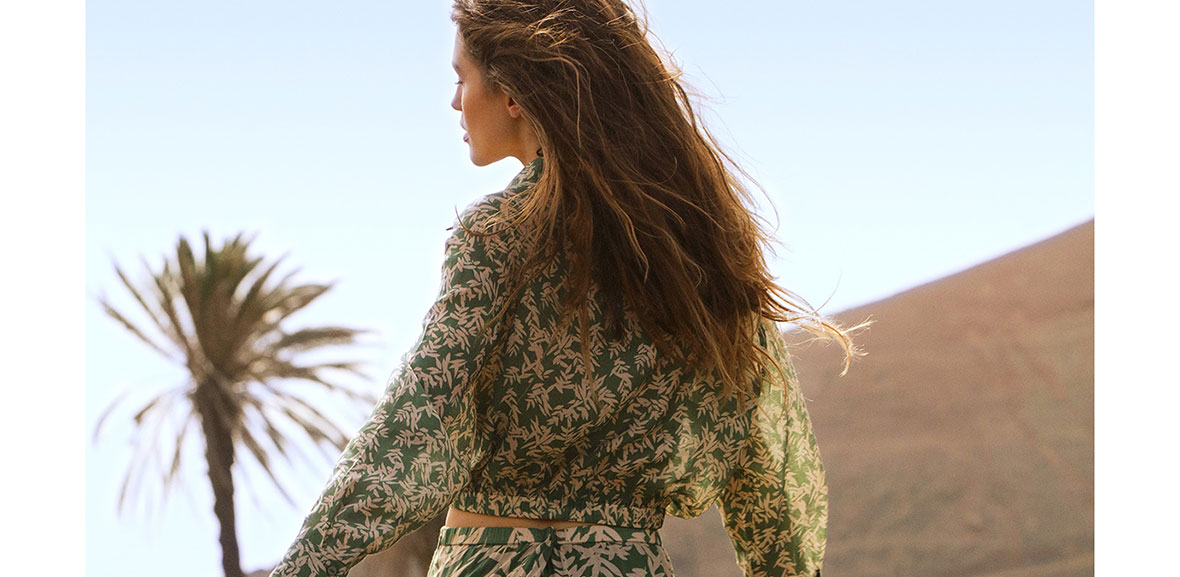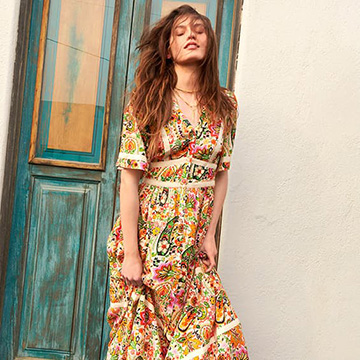What You Need To Know When Sustainably Shopping


To truly know and understand ba&sh is to understand the brand’s commitment to sustainability. At the heart of everything ba&sh does, there is a commitment to giving back, to the community and to the environment. Calculating and reducing the brand’s carbon footprint is a key priority for us, and we are proud that we can be transparent about all our environmental commitments and where we stand against our goals.
We reached out to Abby K. Cannon who knows firsthand that you do not need to sacrifice your sense of style to honor your commitment to sustainability. As an integrative dietitian, sustainability expert, and ba&sh shopper (bien sûr), we thought she’d be the perfect person to tap to explain the ins and outs of sustainable shopping.
Tell us a little bit about what you do.
I’m an attorney-turned holistic integrative dietitian, environmentalist, and wellness expert. I left my legal career to start Abby’s Food Court, a private nutrition practice and blog focused on women’s health and eco-friendly living. My goal is to make healthy, sustainable living approachable, doable, and more fun. I simplify the confusing health and wellness information available to help my clients and community upgrade their health and lifestyle. I’m a sought-after writer and public speaker and can often be found sharing my expertise about the intersection of human and planetary health. As a mom to an energetic toddler, I’m even more committed than ever to spreading knowledge about healthy, sustainable living.
What are some questions you should ask when shopping for clothes to ensure you're making environmentally friendly fashion choices?
Approach shopping for clothes much like you approach shopping for food: READ THE LABEL! Ask yourself or the brand what materials are the clothes made of, do the clothes have any certifications (i.e., GOTS, OEKO-TEX, Global Organic Textile Standard, Global Recycled Standard), who made the clothes, where were the clothes made and what is the brand’s sustainability policy.
If you can’t find this information easily online or on the packaging, that’s a red flag that the brand likely does not have environmentally friendly clothing or practices. And remember that there are many different fabrics, but the best ones are the most natural. Think organic cotton, plant-based alternatives to viscose (modal, Tencel, lyocell, etc.), hemp, organic wool, organic silk, and certified/recycled leather.
What are some uniquely important things to know about ba&sh's sustainability promises?
ba&sh makes it really easy to choose sustainable clothing. On the website, you can search “sustainable” to see all the offerings and each sustainable item is clearly labeled “sustainable.” This takes most of the work out of having to determine whether the item is sustainable. In addition, ba&sh uses the most common and predominant certifications for their sustainable fashion, including GOTS, OEKO-TEX Standard 100, Organic Content Standard, Global Recycled Standard, Recycled Claim Standard, Forest Stewardship Council, Sustainable Forestry Initiative, Responsible Wool Standard, and Blue Sign.
What are some of your favorite Spring pieces from the brand that you have your eyes on right now and why?
The Clogs, the Damon satin black top, and the Clifford straight-leg jeans. I love staple pieces that I can throw on and look put-together despite minimal effort! I can already tell that I’m going to live in these for client sessions and nursery pickups and everything in between.




